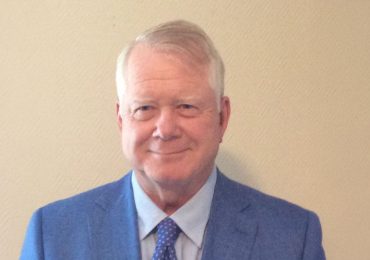Photo courtesy of Tripti Nashier
True innovation can revolutionize entire industries in the dynamic field of corporate finance. Tripti Nashier, a finance manager at Amazon, has done just that with her groundbreaking headcount forecasting model. This sophisticated model is redefining how Fortune 500 companies approach workforce planning and strategic decision-making.
Nashier, who holds a PhD in Financial Studies, has always been drawn to complex problem-solving at the intersection of finance, statistics, data, and business. Working for a global tech firm like Amazon with over hundreds of thousands of employees, she identified a critical gap in workforce management methodologies. “Traditional methods were failing to capture the complexities of modern organizations,” Nashier explains. “We were drowning in intricacies, trying to reconcile top-down directives with bottom-up realities. The conflicting objectives and constraints were overwhelming.”
A Leap Forward in Workforce Management
Nashier’s model represents a quantum leap in forecasting capabilities. Unlike traditional models that focus on one or two aspects, this tool simultaneously optimizes across employee type, location, cost center, organizations, business units, legal entities, and several others. It is a marvel of modern data science to process vast amounts of data across multiple dimensions.
The breakthrough aspects of Nashier’s model are numerous and significant. Its multidimensional optimization capability sets a new standard in the field, balancing multiple factors simultaneously. The model’s adaptive forecasting adjusts based on current run rates while adhering to top-down directives, which is a novel approach in workforce management. A sophisticated constraint hierarchy system prioritizes and balances conflicting constraints, a feature rarely seen in existing tools.
Furthermore, the model integrates advanced statistical algorithms to identify patterns in historical data, significantly enhancing its predictive accuracy. Its scalable architecture can handle organizations from tens of thousands to potentially hundreds of thousands of employees with the same accuracy and performance. Unlike static annual planning models, this system allows for dynamic adjustments, reflecting the rapidly changing nature of modern business environments.
Overcoming Monumental Challenges
The development of this model was an ambitious undertaking. Nashier faced and conquered several significant challenges. Managing forecasts for tens of thousands of employees across multiple dimensions required innovative algorithms and data structures to handle the scale and complexity. The model successfully balances competing goals like cost reduction, skill distribution, and geographical spread, a task that often stumps traditional forecasting methods.
Data integration presented another hurdle, as combining information from various sources such as HR systems, financial databases, and strategic plans into a cohesive model required sophisticated data management techniques. One of the critical challenges for Nashier was to strike a delicate balance between forecast accuracy and model flexibility, a challenge she addressed through advanced data analysis and statistical techniques.
Industry-Wide Implications and Significance
The impact of Nashier’s innovation has been immediate and far-reaching. The model bridges the gap between high-level goals and granular workforce distribution, ensuring precise alignment with organizational objectives. Its ability to forecast accurately across multiple dimensions enables more precise budgeting, potentially saving millions in headcount-related operating costs. Balancing conflicting objectives and constraints allows for optimal resource allocation, enhancing overall operational efficiency.
Dynamic adjustments and scenario modeling capabilities empower leadership to make quick, data-driven decisions in response to changing market conditions. Moreover, by considering multiple factors and constraints, the model helps identify potential risks in workforce planning, allowing for proactive mitigation strategies. Within months of implementation, Nashier reported a 53% improvement in workforce allocation efficiency and projected annual savings of tens of millions in headcount-related operating costs.
The principles behind Nashier’s model are universally applicable. “Whether you’re in tech, manufacturing, or services, aligning your workforce with strategic goals is a fundamental challenge,” she notes. The model has a holistic approach and what sets Nashier’s model apart is its ability to balance competing priorities while maintaining strategic alignment. It is not just about numbers; it is about creating a roadmap for organizational success.
The Road Ahead – A New Standard in Strategic Management
Nashier believes a lot more can be done with the emerging new technologies. “This just scratches the surface of what’s possible,” Nashier says enthusiastically. “I envision a future where AI-driven workforce management becomes a cornerstone of corporate strategy, enabling companies to be more agile, efficient, and responsive to market changes.”
Nashier’s journey exemplifies the power of interdisciplinary thinking in finance. By bridging traditional financial management, data science, and technology, she has created a tool that redefines the boundaries of strategic workforce management. As organizations grapple with unprecedented change and uncertainty, Nashier’s innovative workforce planning provides a competitive edge. Her work solves a critical business problem and paves the way for a new era of data-driven decision-making in corporate America.
Tripti Nashier has established herself as a true visionary in technology and financial management. Her revolutionary workforce management model testifies to the transformative power of innovation in addressing complex business challenges. Clearly, Nashier’s work will continue to shape technology and corporate strategy, offering companies the tools they need to thrive in an increasingly complex and dynamic business environment.
















